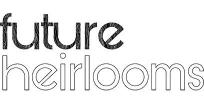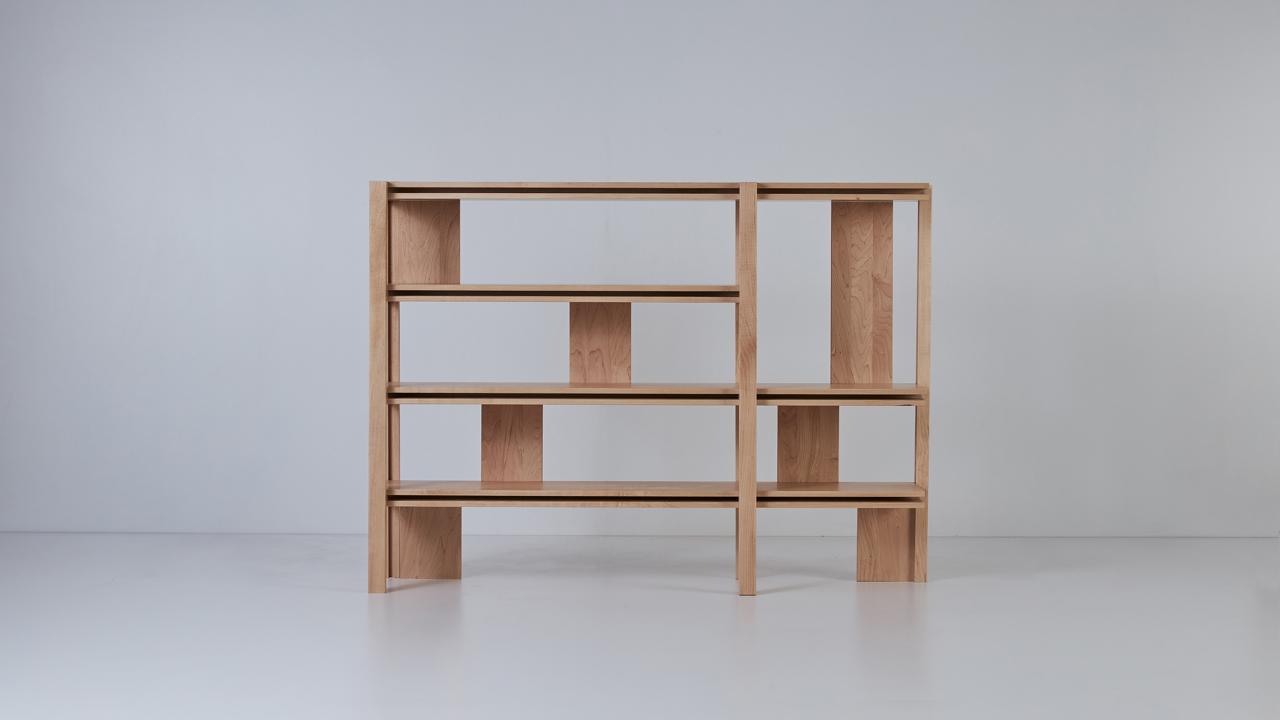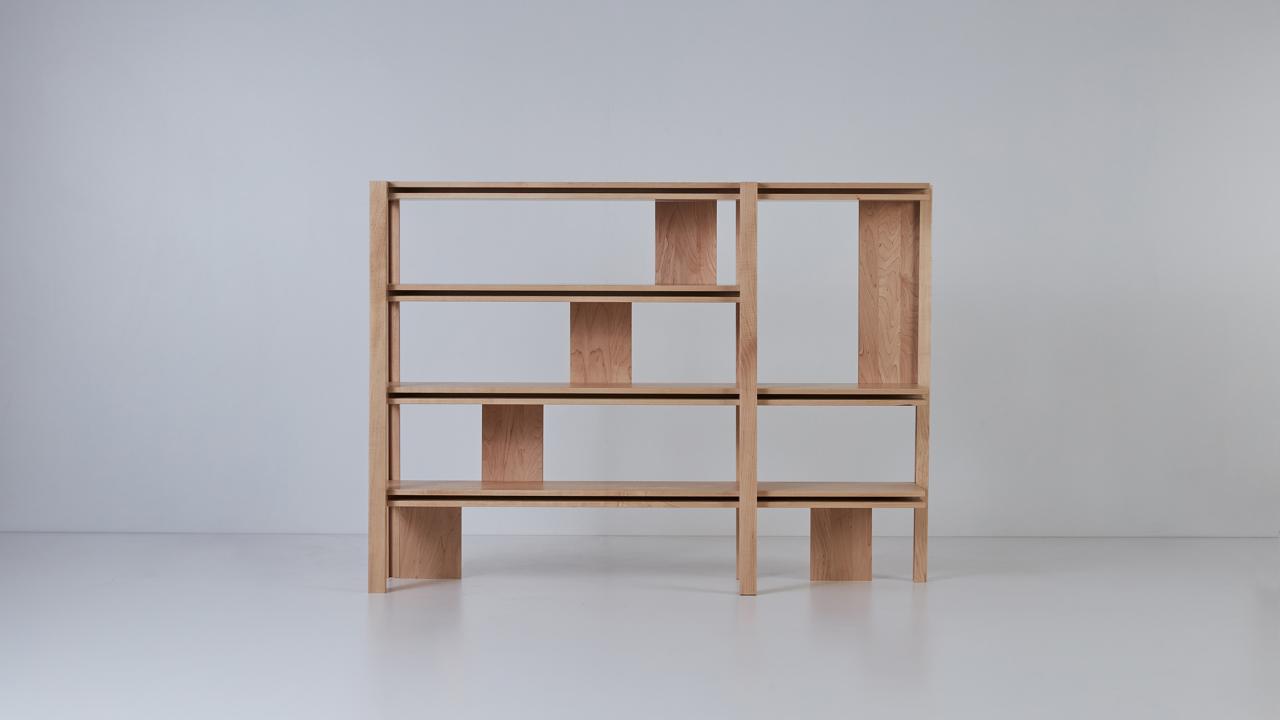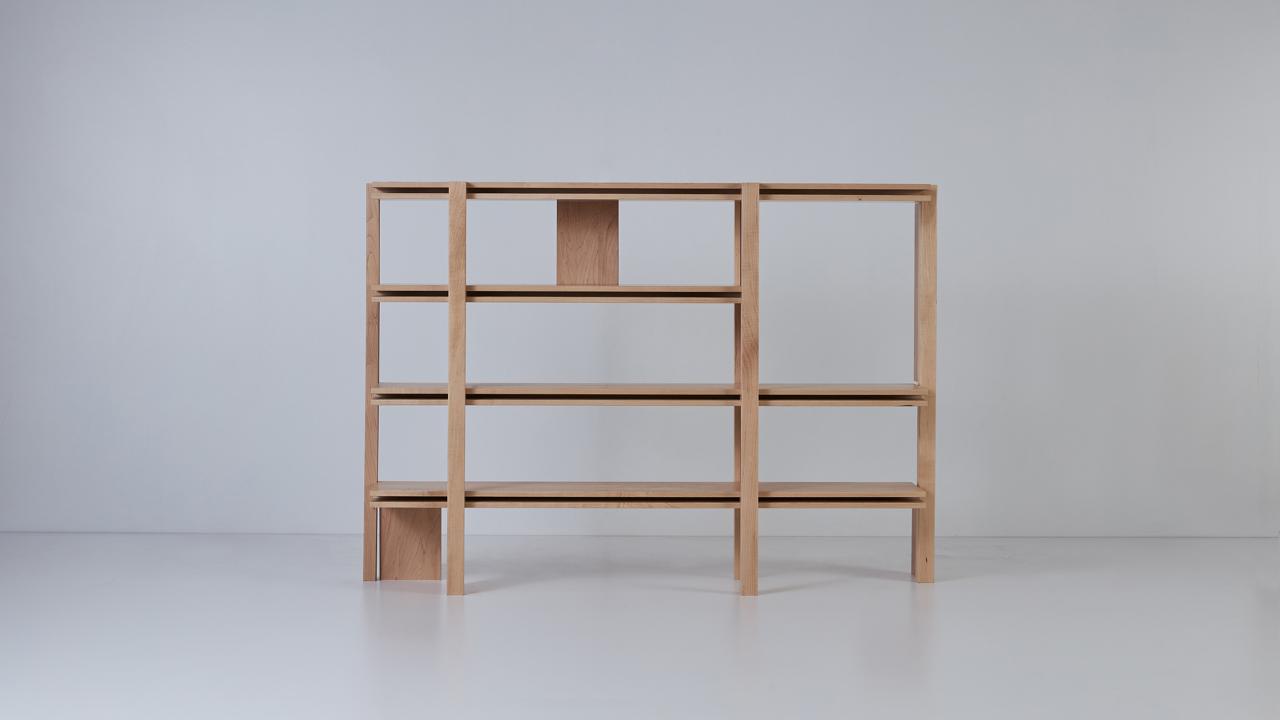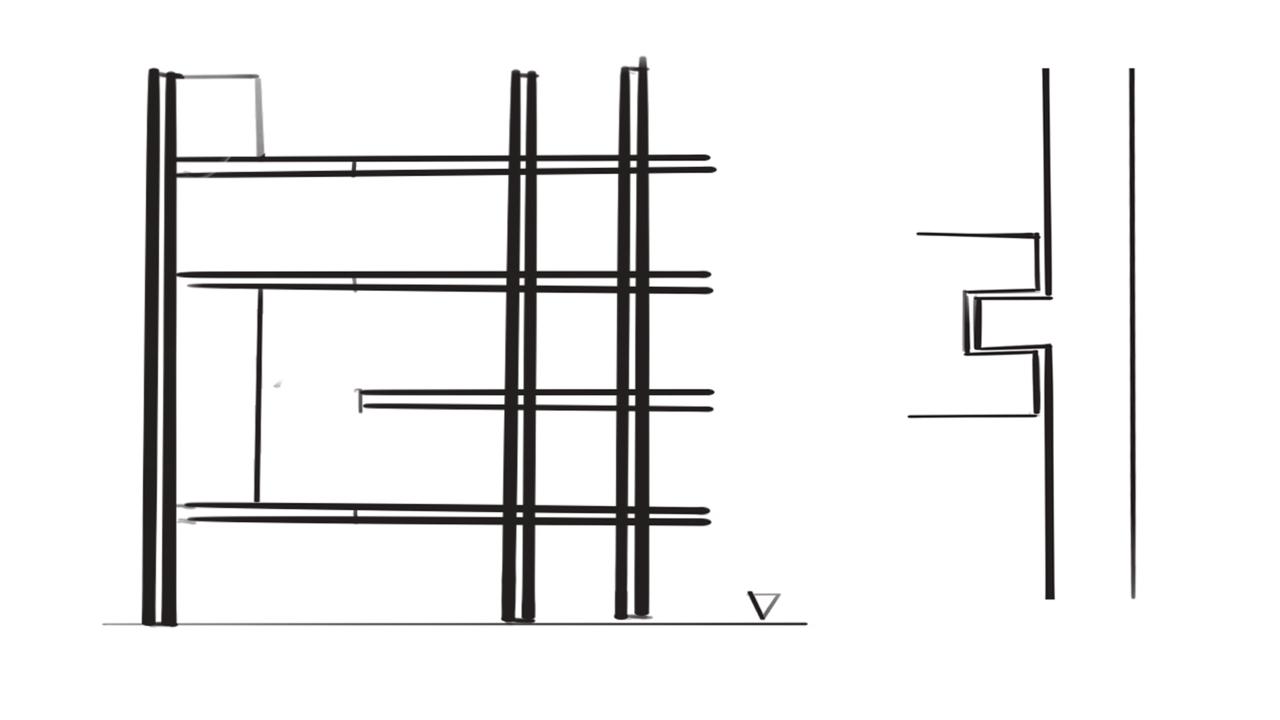Oyku Uner
Ogata
Initial design proposal
"Future Heirloom" was a valuable open call, providing an opportunity to voice something to the industry and bring it to life. It led me to focus on timeless and sustainable details, starting from primitive ideas. The pivotal moment in human evolution is when humans stood upright and gave new roles to their limbs. The proposed Ogata shelf system was designed with inspiration from the articulation system where limbs play a role in design, just like the beginning of human movement. In line with the meaning of "Beginning" and "Direction," the name "Ogata" focused on a narrative that guides from the past to the future.
Design development and production process
The Ogata Shelf unit is in a highly dynamic form, allowing users to assemble the components and alter the divisions based on the arrangement of objects, offering alternative solutions over time. The American Maple Wood, with its natural appearance, was chosen to evoke a sense of lightness and purity in the intricate composite structure. Furthermore, the modular system provides users with a tactile experience, allowing them to engage with the material and design.
In the initial design, channels were carved out and movable intersecting columns were integrated to facilitate movement. However, stability issues emerged in a design that aimed to embrace motion and transience. To enhance the design's static qualities without compromising its dynamic nature, fruitful dialogues were conducted with AHEC and the manufacturing company. Through a series of decisions ranging from significant to minute details, the complex curved elements evolved into more minimal details, akin to the simplicity found in nature. The vertically elongated design shifted slightly horizontally, striking a balance between mobility and stability, resulting in an aesthetically pleasing system.
